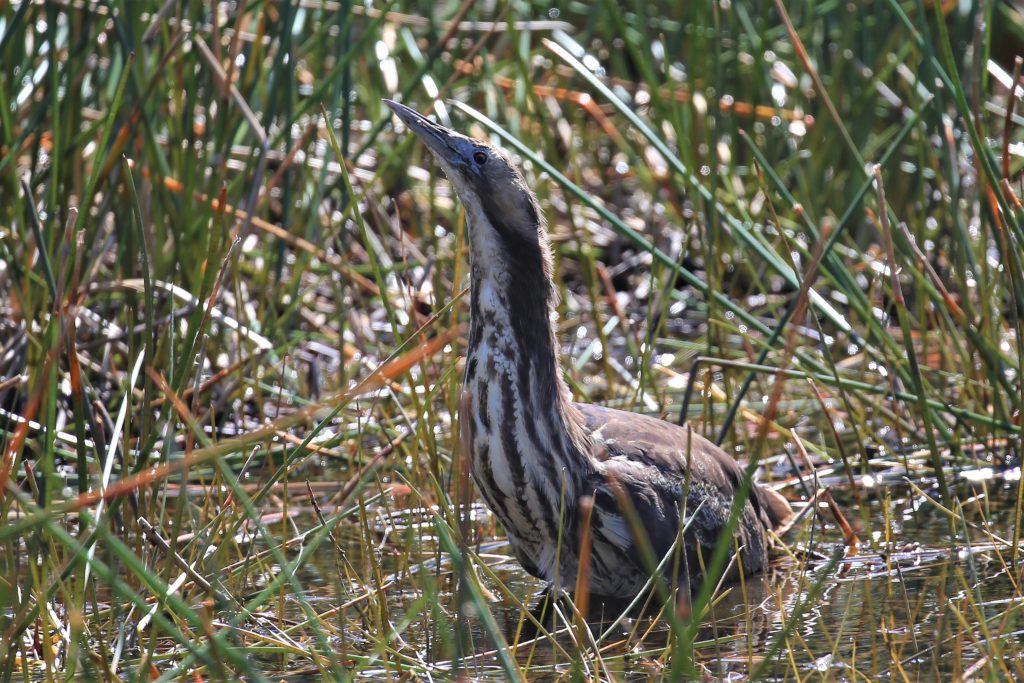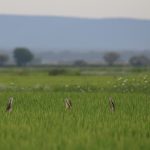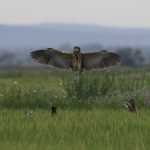What a wonderful trip. It was as if we spent a week compiling precious pieces of a rare, incomplete jigsaw puzzle called “Australasian Bittern Ecology and Conservation”. After several years of being in touch via email and phone, it was so nice to finally get together with the NZ bittern crew and see some of their sites first-hand. There is some great work happening across the ditch and there was a strong sense of being united in working towards reversing the decline of this iconic waterbird that we share. It is affectionately known as Matuku Hūrepo in Māori language, or just Matuku for short.
The knowledge exchange began at the end of September with New Zealand’s biennial National Wetland Restoration Symposium in Napier. I was honoured to be a keynote speaker, where I focused on the importance of community engagement, novel habitats and active management. Special thanks to Nathan Burkepile and Fish and Game NZ for organising and sponsoring my trip to the conference, and to Emma Williams and the Department of Conservation (DOC) for a superb tour of bittern sites on the North Island afterwards, but more on that later.
Another keynote at the conference was Conservation Minister, Eugenie Sage, who was impressive in her grasp of wetland conservation, taking questions from the floor on key issues like water quality and dairy farming. It was refreshing to see a politician as an expert in their portfolio, and she reiterated the good news about increased funding for DOC under the Ardern Government. There were many interesting presentations over the two days (you can read the abstracts here), such as Emma’s radio-tracking of booming male bitterns, and Colin O’Donnell’s predator removal experiment that showed a significant increase in Fernbird and Spotless Crake densities following the control of rats, weasels, ferrets, stoats, hedgehogs, cats and possums. Colin anticipates similar results for bitterns.

Restoration of Pekapeka Swamp, an important bittern site in Hawkes Bay, has focused on water level control and willow removal.
 This is Hans Rook. He’s been working with local landholders, DOC, and Hawkes Bay Regional Council to help restore this wetland near Napier for Matuku. Water supply, depth management and predator control have seen Matuku numbers rise to about 14 here.
This is Hans Rook. He’s been working with local landholders, DOC, and Hawkes Bay Regional Council to help restore this wetland near Napier for Matuku. Water supply, depth management and predator control have seen Matuku numbers rise to about 14 here.






 This is the legendary John Cheyne, a long-time champion of New Zealand’s wetlands. His 1980 study of bitterns at Whangamarino yielded over 140 booming males. Recent surveys suggest a 90% decline.
This is the legendary John Cheyne, a long-time champion of New Zealand’s wetlands. His 1980 study of bitterns at Whangamarino yielded over 140 booming males. Recent surveys suggest a 90% decline.
 Dr Emma Williams in her natural peat bog habitat at Whangamarino, serenaded by a booming bittern and dueting Fernbirds.
Dr Emma Williams in her natural peat bog habitat at Whangamarino, serenaded by a booming bittern and dueting Fernbirds.
 The Lower Kaituna Wetland near Tauranga.
The Lower Kaituna Wetland near Tauranga.
Over near Tauranga, we visited the Lower Kaituna Wetland, and were lucky enough to spot a bittern feeding in the Eleocharis (see below). Part of the restoration work in the broader area here is basically starting from scratch, essentially constructing new wetlands. This project is a great partnership thanks to Fish and Game NZ, DOC and Bay of Plenty Regional Council.


And on the edge of Tauranga itself, right on the coast, we visited a bittern breeding site that was tidal. This was quite perplexing. The vegetation is quite low and we wondered where they build their nests without being flooded. Unfledged chicks have been found by members of the public in adjacent land, including a recreational park. We talked about how this site would be suitable for a thermal drone in locating nests and monitoring breeding success.

 Tidal wetlands at Tauranga, atypical bittern breeding habitat.
Tidal wetlands at Tauranga, atypical bittern breeding habitat.

























